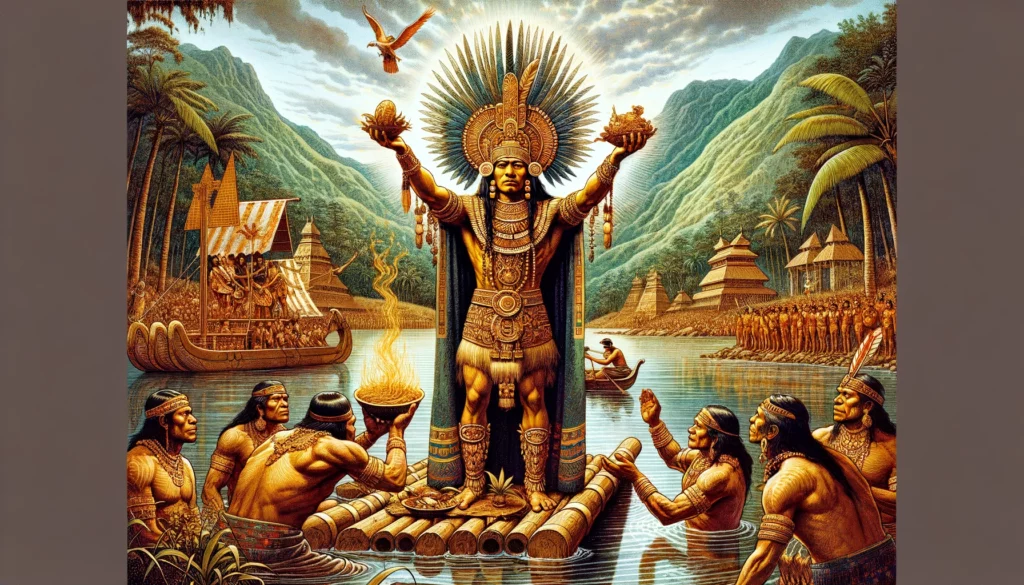Imagine a city shimmering with gold, where every building, every monument, and even everyday items are adorned with the precious metal. This is not a scene from a fantasy novel but the legend of El Dorado, a myth that captivated explorers for centuries. El Dorado, often referred to as the City of Gold, has been a symbol of ultimate treasure, a metaphor for the unattainable, and a beacon for adventurers and dreamers alike.
In the 16th and 17th centuries, the allure of El Dorado was a powerful magnet for European explorers. They braved treacherous jungles, hostile environments, and unknown dangers in pursuit of this mythical city. The story of El Dorado is intertwined with the history of South America, a continent rich in culture, resources, and ancient civilizations.
The Importance of El Dorado

The legend of El Dorado offers more than just a tale of lost treasure. It’s a window into the human psyche, showcasing our innate desire to find something greater than ourselves. For the European explorers, it represented not just material wealth but also the triumph of discovery, the glory of conquest, and a chance to write their names in the annals of history.
Beyond its psychological impact, the myth of El Dorado played a crucial role in the exploration and colonization of South America. It spurred numerous expeditions, leading to the discovery of previously unknown lands and peoples. This relentless quest impacted the indigenous cultures and reshaped the geopolitical landscape of the continent.
Now, let’s delve into the “why” behind this captivating story.
Why El Dorado Captured Imaginations

- Historical Context and Key Figures:
- Origins: The El Dorado myth originated around the early 1500s with the Muisca civilization. The Muisca, living in the Andean region of present-day Colombia, conducted a ritual where their leader, covered in gold dust, would immerse himself in Lake Guatavita as an offering to the gods.
- First European Contact: Gonzalo Jiménez de Quesada, a Spanish conquistador, encountered the Muisca in 1537. Fascinated by their gold craftsmanship, he returned with tales that fueled the legend.
- Sir Walter Raleigh: In the late 16th century, this English explorer led expeditions to find El Dorado. His extensive travels and writings, although unsuccessful in finding the city, greatly popularized the myth in Europe.
- The European Influence and the Pursuit:
- Spanish Conquistadors: Motivated by the success of Hernán Cortés in Mexico and Francisco Pizarro in Peru, Spanish explorers were driven to find more wealth. The El Dorado legend was a perfect target for their ambitions.
- Economic and Political Factors: The 16th century was a period of economic and political rivalry in Europe. Wealth from the New World was seen as a way to gain an edge. El Dorado became a symbol of ultimate wealth and power.
- Cultural Misinterpretation and Myths:
- The Gold Raft: The discovery of the Muisca Raft, a small gold figurine depicting the El Dorado ritual, in 1969 gave physical evidence to the legend and showed the Europeans’ misinterpretation of the Muisca’s spiritual practices.
- Mythical Embellishments: Over time, the story of El Dorado transformed. It went from a man (the golden chief) to a city, and then to a kingdom of gold, reflecting the Europeans’ growing imagination and desperation.
- Impact of Previous Discoveries:
- Inca and Aztec Treasures: The immense wealth found by the Europeans in the Inca and Aztec empires made the existence of El Dorado seem plausible.
- The Psychological Impact: These discoveries created a frenzy among the European explorers. The possibility of finding another wealthy civilization was too tempting to ignore.
- The Lasting Legacy:
- Cartography and Exploration: The quest for El Dorado led to extensive exploration of South America. Maps of the 16th and 17th centuries often included El Dorado, pushing explorers to chart unknown territories.
- Influence on Literature and Culture: The legend of El Dorado has been a source of inspiration for writers, filmmakers, and artists, symbolizing the eternal human quest for wealth, glory, and the unattainable.

Conclusion: The Enduring Fascination with El Dorado
The legend of El Dorado, a city of unimaginable wealth, remains one of history’s most enduring mysteries. It’s a tale that transcends time, capturing the essence of human ambition, curiosity, and the allure of the unknown. This mythical city, whether real or imagined, symbolizes the unquenchable human thirst for discovery and the lengths to which we will go in pursuit of our dreams.
Despite numerous expeditions, El Dorado has remained elusive, perhaps a mirage that was never meant to be found. However, its true treasure lies not in gold but in the stories, the adventures, and the rich history it has inspired. The legend of El Dorado has shaped cultures, influenced literature and arts, and altered the course of history.
Today, El Dorado serves as a metaphor for the ultimate pursuit, a reminder of the power of legends, and the enduring human spirit that drives us to explore the unknown. It invites us to ponder: what is our El Dorado, and how far are we willing to journey in its pursuit?
El Dorado, the City of Gold, may never be found, but its legend will continue to shine brightly, a golden beacon in the annals of history and the human imagination.